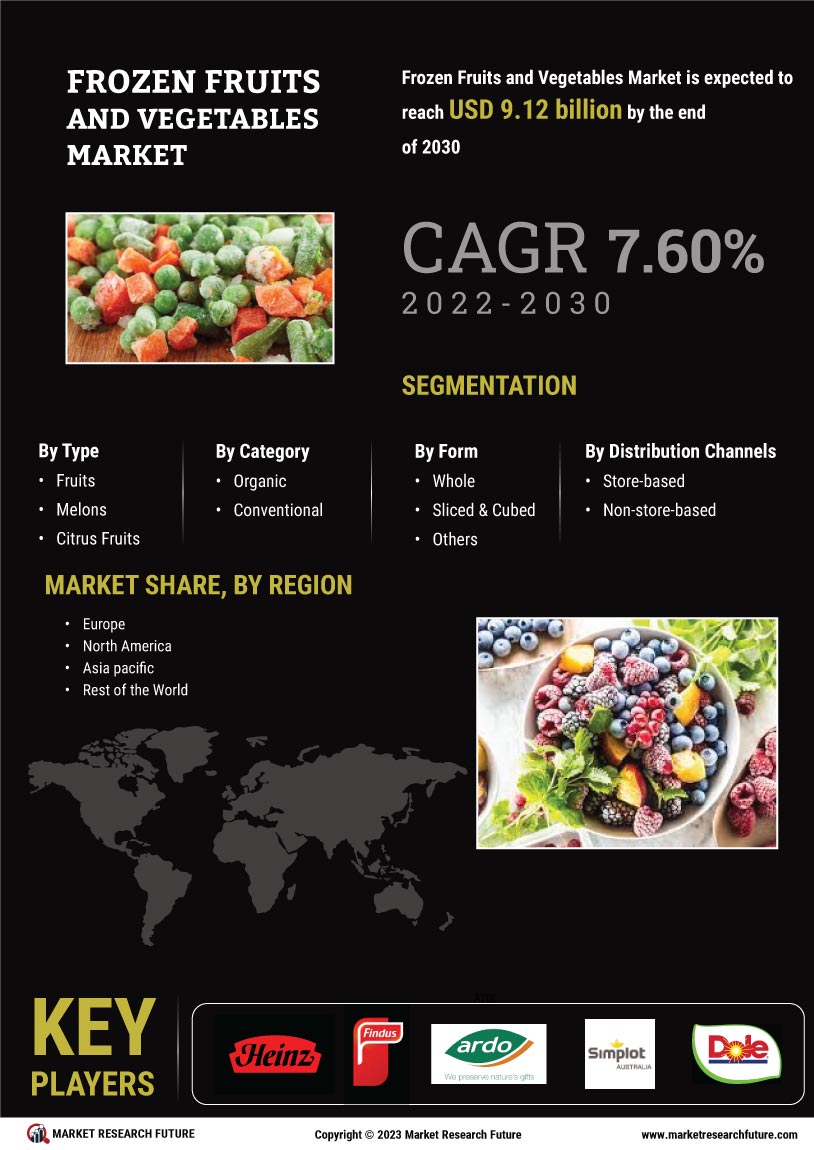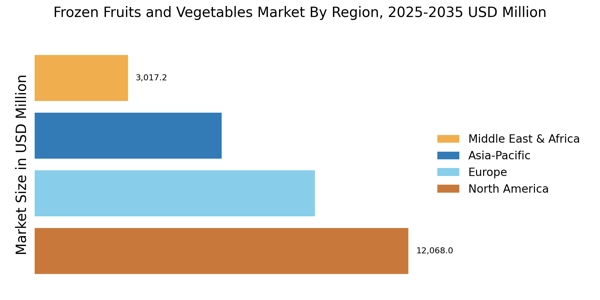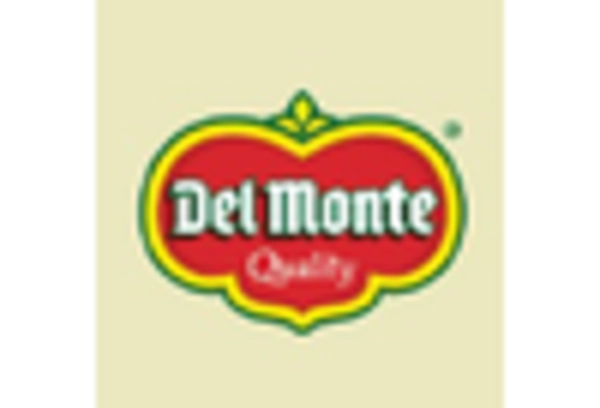Expansion of Retail Channels
The Frozen Fruits and Vegetables Market is benefiting from the expansion of retail channels, including supermarkets, hypermarkets, and online platforms. As consumers seek greater convenience, the availability of frozen products in diverse retail settings is crucial. The rise of e-commerce has particularly transformed the shopping experience, allowing consumers to purchase frozen fruits and vegetables from the comfort of their homes. Recent data indicates that online grocery sales are expected to grow by over 20% in the coming years. This shift in purchasing behavior is likely to enhance the visibility and accessibility of frozen products, thereby driving sales in the Frozen Fruits and Vegetables Market. Retailers are increasingly investing in their frozen food sections to meet this growing demand.
Increased Focus on Sustainability
The Frozen Fruits and Vegetables Market is witnessing a heightened focus on sustainability and environmentally friendly practices. Consumers are becoming more aware of the environmental impact of their food choices, leading to a demand for sustainably sourced and packaged products. Companies in the frozen food sector are responding by adopting eco-friendly practices, such as using recyclable packaging and sourcing ingredients from sustainable farms. This trend is likely to resonate with environmentally conscious consumers, potentially increasing market share for brands that prioritize sustainability. As the industry adapts to these changing consumer preferences, the Frozen Fruits and Vegetables Market is expected to grow, reflecting a broader commitment to environmental stewardship.
Rising Demand for Convenience Foods
The Frozen Fruits and Vegetables Market experiences a notable surge in demand for convenience foods. As lifestyles become increasingly hectic, consumers seek quick and easy meal solutions. Frozen fruits and vegetables offer a practical alternative, allowing for minimal preparation time while retaining nutritional value. According to recent data, the convenience food sector is projected to grow at a compound annual growth rate of approximately 4.5% over the next five years. This trend indicates a shift in consumer preferences towards ready-to-eat options, thereby driving the growth of the Frozen Fruits and Vegetables Market. Retailers are responding by expanding their frozen food aisles, which further enhances accessibility and availability for consumers.
Nutritional Awareness and Healthy Eating
The Frozen Fruits and Vegetables Market is significantly influenced by the increasing awareness of nutrition and healthy eating habits. Consumers are becoming more health-conscious, seeking products that align with their dietary goals. Frozen fruits and vegetables are perceived as a convenient way to incorporate essential vitamins and minerals into daily diets. Recent studies suggest that frozen produce can retain nutrients comparable to fresh options, making them an attractive choice for health-oriented consumers. This growing emphasis on nutrition is likely to propel the market forward, as more individuals opt for frozen alternatives to meet their health objectives. The industry is thus positioned to benefit from this trend, as it aligns with the broader movement towards healthier lifestyles.
Technological Advancements in Freezing Techniques
Technological advancements in freezing techniques are playing a pivotal role in the Frozen Fruits and Vegetables Market. Innovations such as flash freezing and improved packaging methods enhance the quality and shelf life of frozen products. These advancements not only preserve the taste and texture of fruits and vegetables but also ensure that they retain their nutritional value. As a result, consumers are increasingly drawn to high-quality frozen options. The market is expected to witness a growth rate of around 5% annually, driven by these technological improvements. Companies that invest in state-of-the-art freezing technologies are likely to gain a competitive edge, further propelling the Frozen Fruits and Vegetables Market.


















Leave a Comment